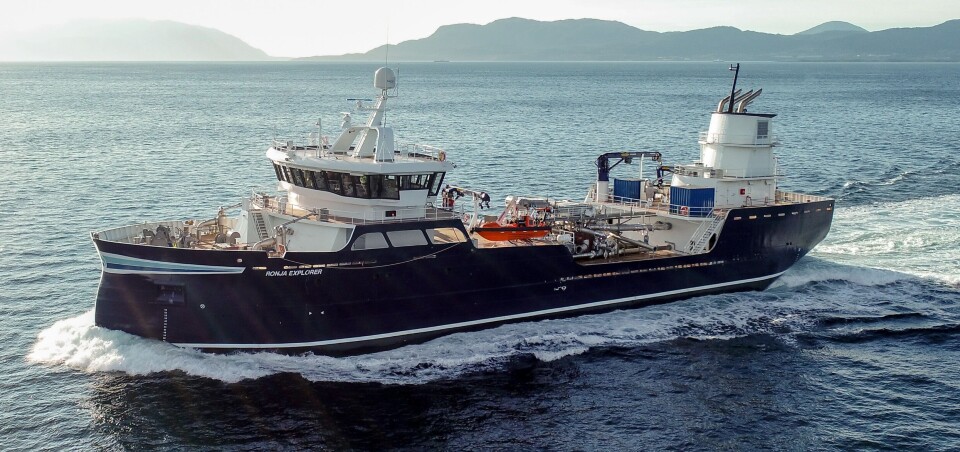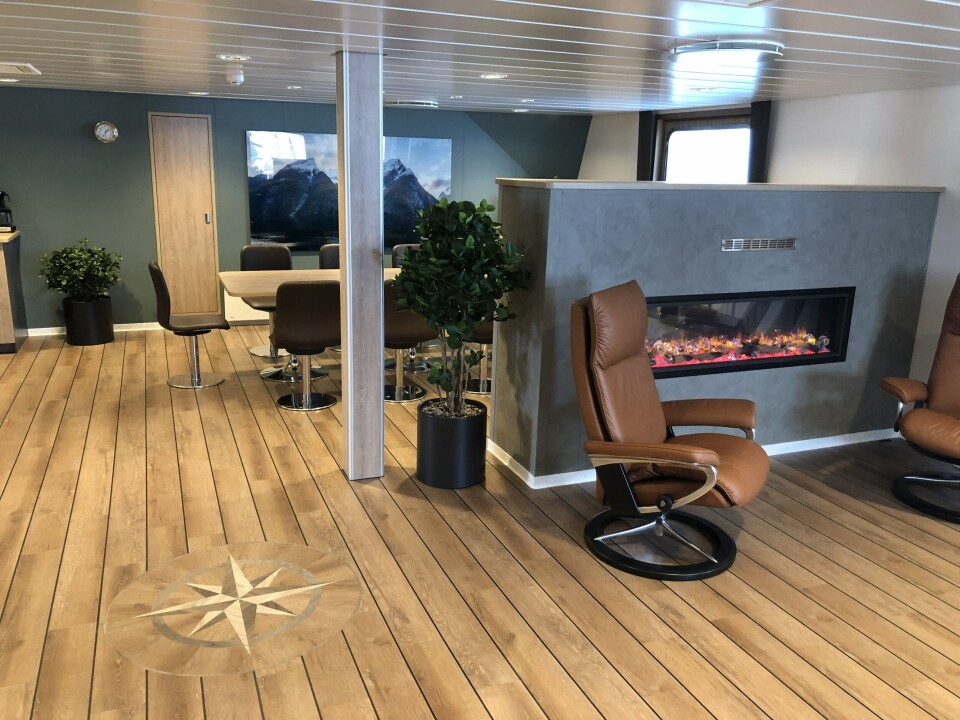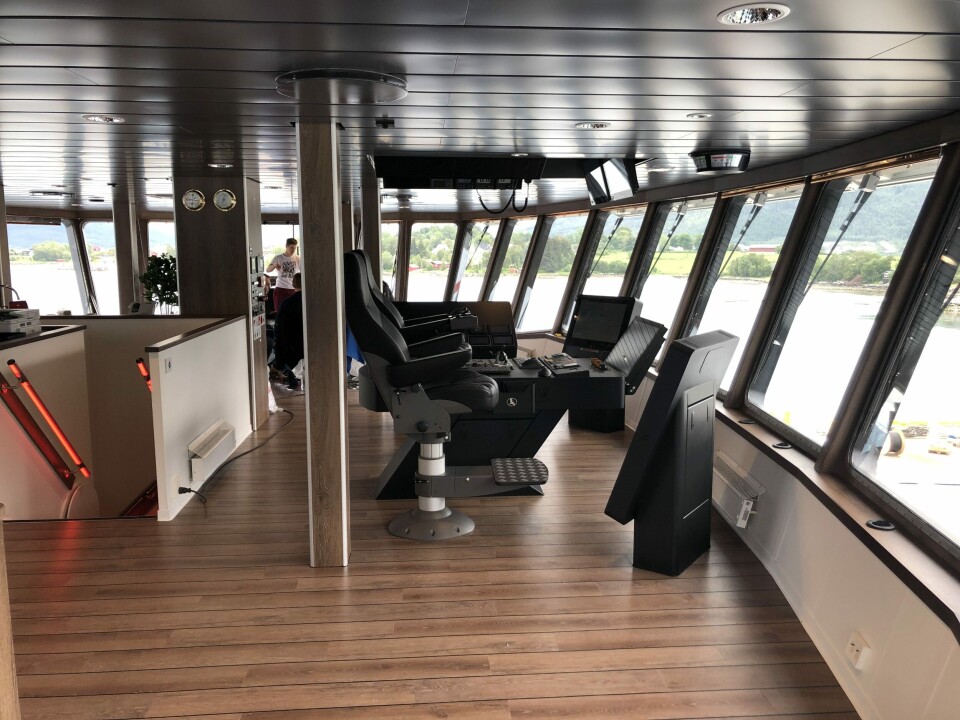
The wellboat tailor-made for shallower Scottish waters
A wellboat specifically adapted for operations in Scotland will start work for the Scottish Salmon Company at the beginning of next year.
The vessel will be supplied and crewed by Sølvtrans, the world’s biggest wellboat operator, which has just taken delivery of an identical boat, the Ronja Explorer, for use in Norway.
The boat destined for Scotland is currently being fitted out by the Aas Mek. Verksted yard at Vestnes, Norway and is due for delivery in October. It will start a five-year contract with SSC in January.

Closed transport
The boat will have a shallow draft in relation to its load capacity of 2,500m³, and can transport smolts and post-smolts to areas which can be difficult to access by vessels with a deeper draft.
The Ronja Explorer has been designed under Sølvtrans’ circulation principle, with lateral circulation in the cargo spaces specifically intended for closed transport.
The boat is arranged for transport of smolts and harvesting fish in open and closed systems, as well as freshwater treatment for delousing and for use as a service vessel for fish farms.
The boat is also equipped with a filtering and ultra-violet (UV) system for water purification for smolt transport, delousing and treatment of all discharges into the sea.
Exercise room
The boat has accommodation for 12 people in one and two-person cabins with a toilet and shower, TV, music system and sofas.
The vessel also has a well-equipped mess and galley, a coffee shop by the work deck, and a TV lounge and exercise room.
The bridge is arranged with three operator positions for manoeuvring the boat, remote control system for operation and monitoring of all systems, and remote control of all cargo and fish handling. The boat is equipped with a vacuum toilet system and sewage treatment according to the strictest requirements.

Cargo space
The cargo space totals 2,500m³, divided into two holds with sliding bulkheads. This gives a capacity of 375 tonnes of live fish.
The new build is designed for unloading to onshore installations, for sorting, delousing and other tasks without the use of a vacuum pump, to ensure the gentlest treatment of the fish.
The vessel has significant capacity for degassing the water in the wells, with four CO₂ aerators, oxygenation facilities, etc. for treatment of the water in the cargo holds in connection with closed transport, freshwater treatment of the fish, transport of smolts, transport through zones with special restrictions, etc.
There are filters in the circulation system to prevent the discharge of lice into the sea during delousing, and a system for the sifting of seawater and freshwater when loading and unloading in connection with delousing and amoebic gill disease treatment using freshwater.
Water filters
All waste water from the lice filter is run through separate filters for the separation of dry matter / lice and further UV treatment of the purified waste water. All lice are collected in containers that are destroyed on board or delivered to shore.
The boat is also equipped with a refrigerated seawater (RSW) system for cooling the water in the cargo holds during transport of fish in a closed system. It has a capacity of 2 x 2200 kw at 7°C, which can lower the temperature by approximately 1.2°C per hour.
A Well 3000 automated monitoring system has been installed for load monitoring, tank mirroring, alarm systems, remote control of the circulation system and automatic logging and reporting system according to new Norwegian regulations for wellboats.
Disinfection system
All systems, machinery, monitoring, etc are remotely controlled and logged from the bridge via an automated system. The boat is also equipped with lights and underwater cameras for monitoring the fish in the cargo hold during loading and transport. A camera is also mounted externally underwater on the boat to monitor load hoses, nets and the like in connection with loading cages.
Although the boat’s hull was made in Turkey, it has been fitted out by the Aas Mek. Verksted yard and is equipped with the yard’s specially-developed “Well Wash” washing and disinfection system. This system is a fully automatic washing system for washing and disinfecting the cargo spaces, circulation pipes, vacuum system, loading and unloading system and CO₂ aerators in an automatic cycle-controlled process.
For handling of load hoses and assistance on the cages, four Palfinger cranes are mounted on deck - two at 48 t / m and two at 23 t / m for net handling. In addition, there are capstans, drum winches for assistance at the cages, anchor winches and mooring winches.
For counting and control of biomass during loading and unloading, Aqua Scan and Vaki fish counters have been fitted, as well as Vaki smolts counters and dry counters on sorting machines.
Main engine
The main engine is a Yanmar 6EY26W producing 1920 kW at 750 rpm, connected to a Brunvoll Volda gear and propeller system.
Power production is provided by two CAT 3512 C generators, each of 1550 kW v / 1800 rpm, as well as a Nogva Scania DI 13 75 M port unit of 323 kW.
Brunvoll Volda side propellers are mounted in front and aft, one at 450 kW and the other at 300 kW.
All systems, machinery, monitoring, etc are remotely controlled and logged from bridge via the automated system.























































